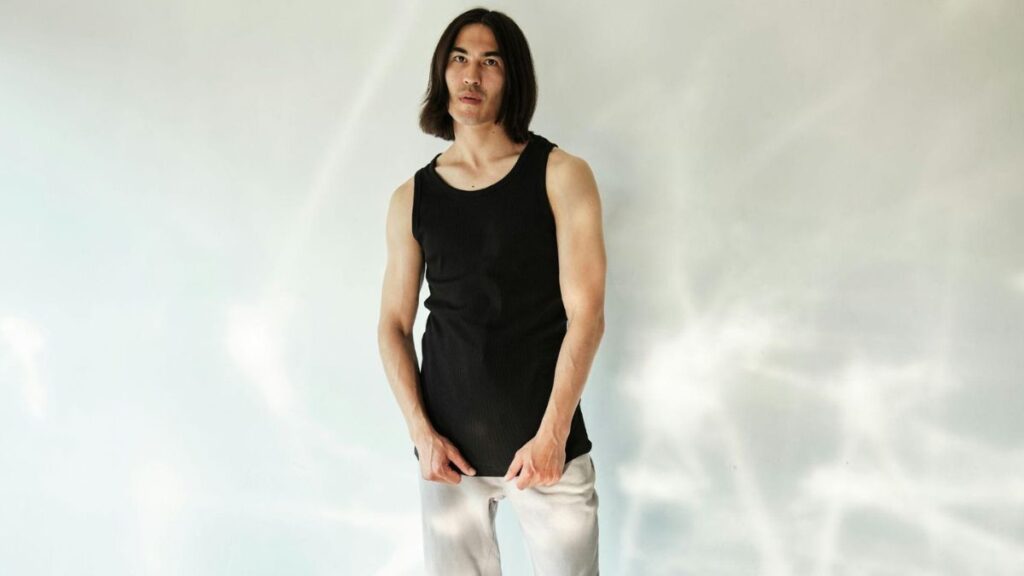Most branded apparel fails because it’s designed for marketing, not real-life wearability.
Prioritizing fabric quality and design minimalism can turn merch into everyday wardrobe staples.
Subtle branding and thoughtful aesthetics encourage repeated use, increasing brand exposure organically.
The best merchandise tells a story and builds community—it’s not just seen; it’s lived in.
You’ve probably been handed one before — a stiff, oversized tee with a logo the size of a dinner plate, destined for the back of your drawer or the donation bin. It’s the kind of merch that gets Worn and Reworn once (maybe) and then never sees the light of day again. And yet, brands continue to produce it, hoping it will somehow spark recognition or loyalty.
But here’s the truth: people don’t wear merch because they feel obligated. They wear it because they want to — because it feels good, looks good, and says something they’re proud to be part of. The holy grail isn’t just visibility — it’s rewearability. Merch that earns a place in someone’s weekly lineup is doing the heavy lifting of brand marketing without being asked to. So what sets that kind of apparel apart?
Let’s break down what makes branded clothing worth wearing again and again.
Why Most Merch Gets One Wear (If That)
Here’s the deal: most merch is a missed opportunity. It’s made fast, printed cheap, and screams “corporate giveaway.” People can spot that kind of clothing a mile away — the thick, scratchy cotton, the awkward fit, the loud colors that match nothing else in their closet. Add a busy graphic or a slogan that’s trying a little too hard to be funny, and you’ve got a garment that’s dead on arrival.
Even well-intentioned merch can fall flat. A shirt might have sentimental value in the moment, like during an event or launch, but without long-term wearability built in, it won’t survive the wardrobe purge a month later. And the root issue? Most merch is designed for branding first, not actual humans.
The psychology behind wearable merchandise is simple: People wear things that make them feel good. That could mean comfort, aesthetic appeal, or the sense of being part of something cool or aspirational. If your merchandise doesn’t deliver on at least one of those fronts, it won’t be worn, which is a waste of both budget and potential.
How to Make Your Merch Desirable
To get your merchandise into the regular wardrobe rotation, you need to flip the script. Consider your items as clothing first and marketing as a secondary consideration. That means making design choices that prioritize the end user, such as modern cuts, softer fabrics, and subtle branding that people enjoy wearing.
Minimalism is winning right now for a reason. Instead of flashy logos, think clean typography or a small, tasteful emblem. Neutral tones pair well with a broader range of outfits, increasing the chances of being worn. You’re not trying to shout your brand name — you’re aiming for the nod of “Hey, that’s a cool shirt.”
Working with local or niche providers can also up your game. Smaller print studios or independent designers often bring a more thoughtful, boutique touch to the final product. Suppose you’re hosting a fitness event or running a community sports club. In that case, you might even find that partnering with someone nearby to create custom singlets offers more control over design, fit, and material, and resonates better with your audience’s actual lifestyle.
When merch is something people would wear regardless of the branding, that’s when it starts working for you.
The Fabric Factor
Even the best design won’t save merchandise made from terrible fabric. If it doesn’t feel good on the skin, it won’t get Worn and Reworn—it’s that simple. The tactile experience is often overlooked, but it is one of the primary reasons people gravitate toward certain pieces in their wardrobe over others.
The fabric needs to suit the purpose. If you’re creating athletic or activewear-style merchandise, breathability and stretch are essential. Lightweight blends that wick moisture away, such as polyester-cotton mixes or bamboo fabrics, can make all the difference during a workout. On the other hand, for everyday wear, nothing beats the soft, worn-in feel of cotton. But not all cotton is created equal — combed and ring-spun cotton tends to be smoother, more durable, and feels better straight out of the package.
Climate matters too. If you’re in a warmer region, heavy hoodies and thick crewnecks are a hard sell. Think seasonally and practically. A lightweight tee or tank is more likely to be thrown on when the weather suits — and the more chances someone has to wear it, the better the return on investment (ROI) for your brand.
Simply put, comfort is non-negotiable. You want people to reach for your merchandise because it feels good to wear. That’s what keeps it in the laundry cycle instead of buried at the back of a shelf.
Design that Balances Branding and Style
If the goal is to make merchandise re-wearable, design must tread a fine line between identity and subtlety. Branding doesn’t have to mean screaming your logo across someone’s chest. In fact, the most effective branded merchandise often whispers instead of shouts.
Let’s start with typography. A simple, well-chosen typeface can carry more weight than a complicated graphic. Consider brands like Patagonia or Champion — their logos are small, but the clothing stands on its merit. That’s the bar you want to aim for.
Color choice is another underrated design tool. Loud, clashing colors may seem bold, but they often reduce versatility. Neutral tones — such as greys, blacks, soft earth tones, and navy — are far more likely to be paired with other wardrobe staples. That makes them wearable every week, not just during themed events or gym days.
The key is to give people something they’d buy off a shelf even if your name isn’t on it. You can still include your branding—just do it with restraint. A sleeve print, an inside collar label, or a small tag can signal your identity without dominating the whole piece.
Also, consider design longevity. Trends fade fast. Oversized logos and meme-inspired slogans might get a chuckle, but they rarely last past a season. Aim for timeless aesthetics that still feel relevant a year or two from now. That’s what keeps your merchandise alive and circulating—and your brand quietly traveling wherever your wearers go.
Real Examples of Merch Done Right
Let’s talk success stories — because a few brands and organizations are already doing this exceptionally well.
Take a small indie music festival that created a line of tees using vintage-inspired fonts, muted desert tones, and ultra-soft cotton. The logo? Just a subtle nod on the hem. Fans started wearing the tees to other events, to brunch, and even styling them with jackets and boots. The festival turned merch into fashion and ended up with year-round brand exposure.
Or consider a neighborhood gym that collaborated with a local designer to produce minimalist tanks in athletic cuts. The design was clean, the fit was flattering, and the branding was so understated that you wouldn’t even notice it unless you looked twice. Members didn’t just wear them to class—they wore them on hikes, grocery runs, and even while traveling. The merch became an unofficial badge of community, not just a uniform.
Even a student-run arts collective made its mark with a limited-run sweatshirt collection — each piece featuring hand-drawn illustrations by local artists, and no two pieces the same. They sold out in a week. People wanted them not because of the group’s name, but because the items felt rare and personal. That’s the magic of merch that gets Worn and Reworn— it taps into identity, story, and emotion.
All of these examples share a deep understanding of their audience. They didn’t just slap a logo on a blank tee. They created something with character, comfort, and intention—and that’s what makes merch truly wearable.
Conclusion: Rethinking Merch as Wearable Content
Merch isn’t just a branding tool. At its best, it’s wearable content — a mobile message, a signal of community, a story told through fabric and fit. When you shift the focus from promotion to purpose, everything changes. You start designing for people, not just visibility. And when people genuinely like what they’re wearing, they become ambassadors without even trying.
The next time you plan merchandise, ask yourself: Would I wear this? If the answer is no, go back to the drawing board. The real win isn’t giving merchandise away—it’s seeing it worn on a random Tuesday, far from the event it was made for, still making an impression.







